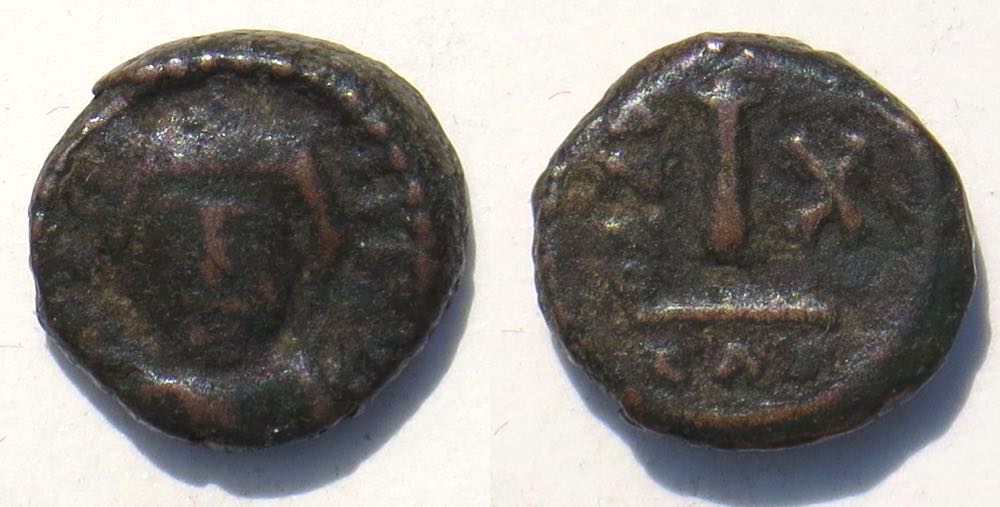
Heraclius, 610-641
14 mm. Thick. 3.74 grams.
10-nummus. His facing bust, weak
Large I, flanked by ANNO and X (619/620).
CAT in exergue for Catania.
Other Byzantine Mints
Page 1 illustrated coins from the main mints including Constantinople, Nicomedia, Cyzicus, Antioch in Syria, Alexandria in Egypt, Carthage in North Africa, and Syracuse in Sicily. It also mentioned the unusal mint Cherson in Crimea. Other mints are much less likely to be encountered and some are mentioned on this page. Here is an off-site map of the Byzantine mints: https://en.wikipedia.org/wiki/Byzantine_mints . It gives a misleading impression of Byzantine coinage because most of those mints were open only for very short periods of time and issued very few coins.
The page has the commonest type from each of Catania in Sicily, Rome in Italy, Ravenna in Italy, Seleucia in Isauria (Turkey, only under Heraclius 615-617), Salona (in modern Croatia, only under Justinian), and Cyprus (only under Heraclius).
Catania:

Heraclius, 610-641
14 mm. Thick. 3.74 grams.
10-nummus. His facing bust, weak
Large I, flanked by ANNO and X (619/620).
CAT in exergue for Catania.
Sear 885. Catania mint.
Rome:
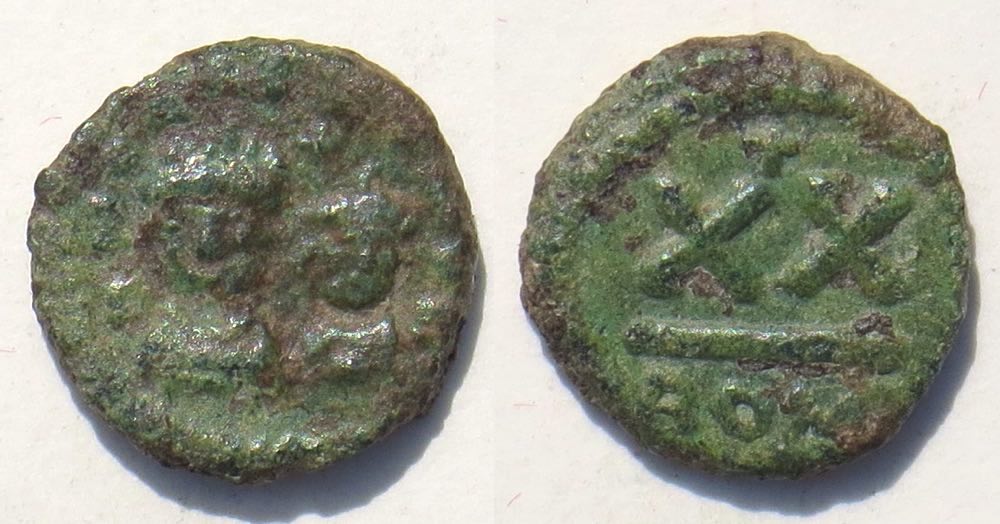 Heraclius, 610-641
Heraclius, 610-641
15 mm. 3.27 grams.
20-nummus. Heraclius and son
XX
ROM
Sear 889. Rome mint.
Ravenna in Italy:
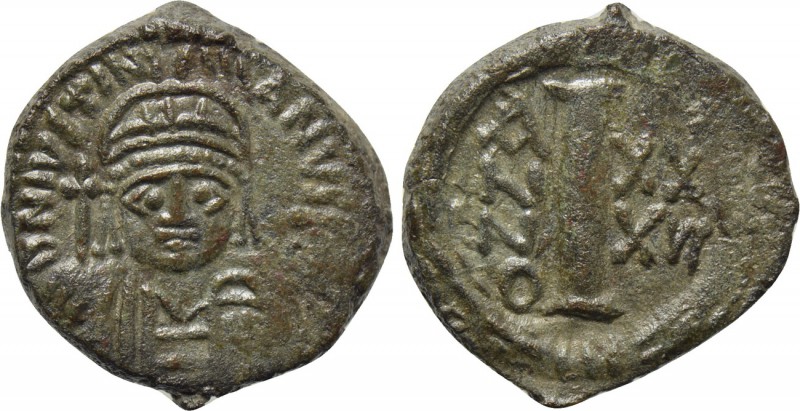 Justinian, 527-565.
Justinian, 527-565.
17 mm. 4.53 grams.
10-nummus, year 36 = 562/3.
ANNO/I/XX/XVI
Some Ravenna-mint coins have "RAV" or even "RAVENN" of its name. This 10-nummia type lacks a mintmark and is by far the most common type from this mint.
Sear 326. Ravenna mint.
Seleucia in Isauria:
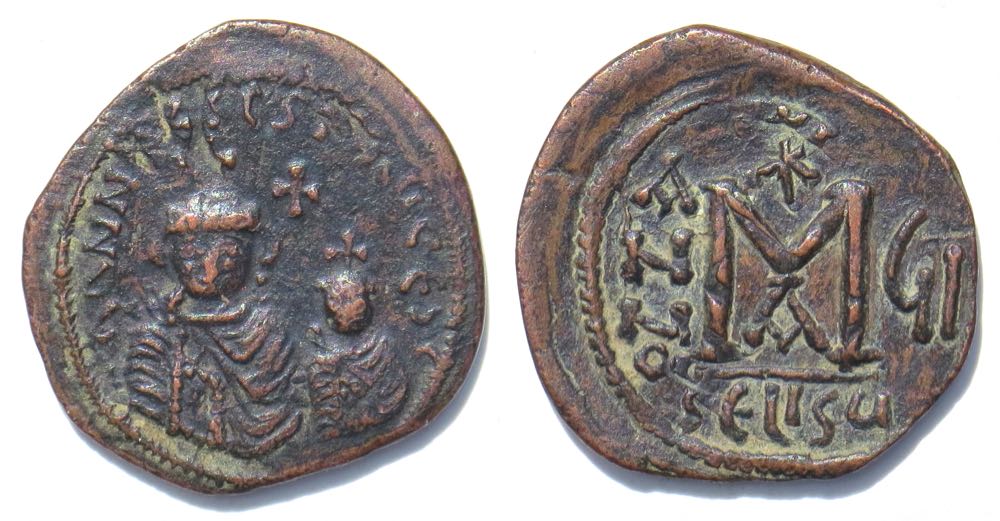
This coin is far better struck than most of its type. Nevertheless, the obverse legend which begins at 8:00 does not spell anything close to the name of the emperor, Heraclius (610-641).
31 mm. 10.51 grams. Follis.
The mintmark is legible: SЄLISU
for Seleucia in Isauria (south central Turkey)
Year 7.
Sear 844. Seleucia mint.
This is a very rare mint. It struck only folles and half-folles under Heraclius during years 6-8. There are similar coins, even rarer, with ISAVR for Isauria in exergue. Some think these belong to a second mint in the Cilician mountains, but I think it is the same mint with a different mintmark.
 Heraclius, 610-641
Heraclius, 610-641Salona (very near Split, in Croatia):
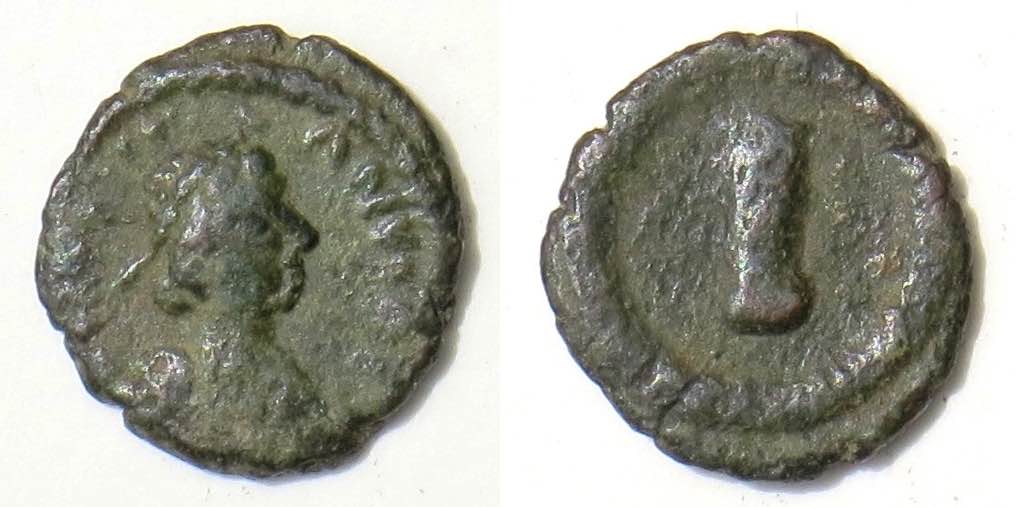
Justinian, 527-565. Justinian was the only emperor on coins of Salona.
14-13 mm. 1.38 grams.
10-nummus.
Salona issued 40-, 20-, and 10-nummus pieces, each with no additional symbols to identify the mint.
Sear 332. Salona mint.
 Heraclius, 610-641
Heraclius, 610-641
Other Mints. There are a few other mints, but all their coins are very rare. Consult reference books to learn about them.
Return to the Table of Contents and links on the main page of "Introduction to Byzantine Coins"
Leave this Byzantine site and go to the main Table of Contents for this group of educational pages.